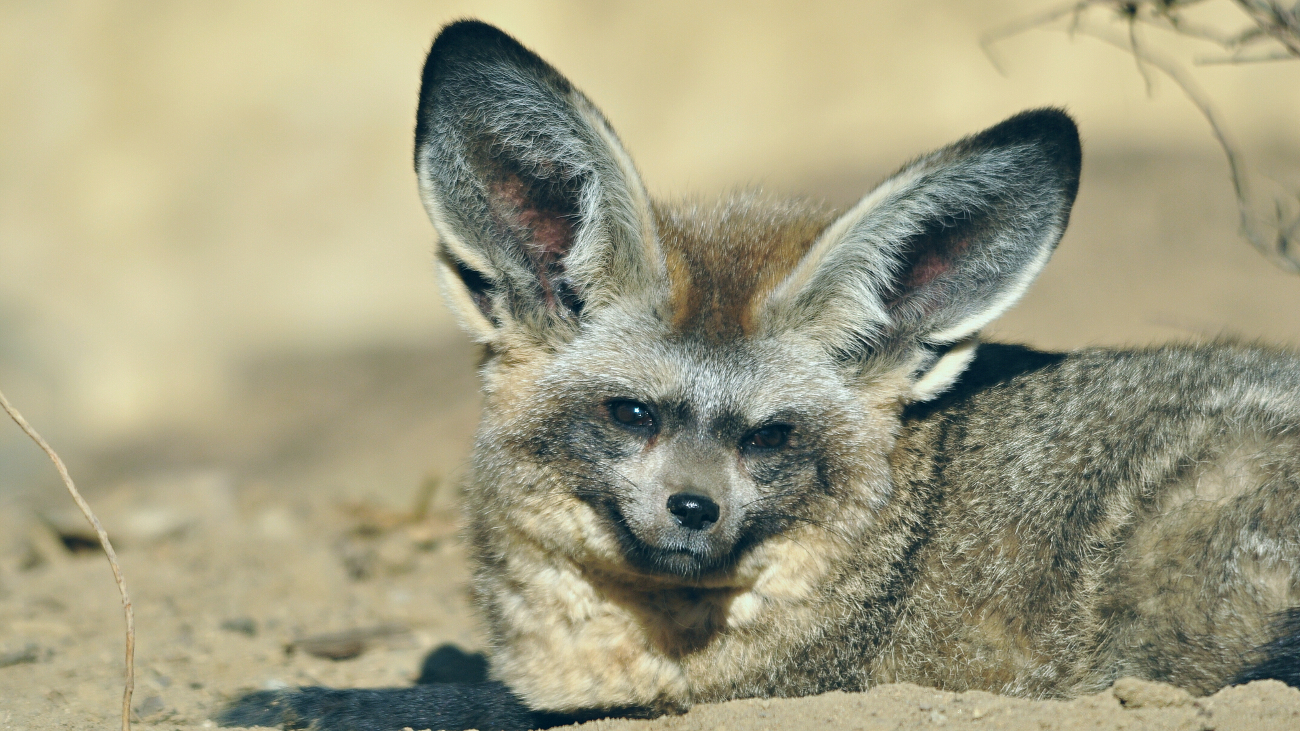- Home
- Conservancy
- Bat eared Fox
Description
The bat-eared fox (Otocyon megalotis) is a species of fox found on the African savanna, named for its large ears,[4] which are used for thermoregulation. Fossil records show this canid to first appear during the middle Pleistocene, about 800,000 years ago. It is considered a basal canid species, resembling ancestral forms of the family.
The bat-eared fox (also referred to as big-eared fox, black-eared fox, cape fox, and Delalande’s fox) has tawny fur with black ears, legs and parts of the pointed face. It averages 55 cm in length (head and body), with ears 13 cm long. It is the only species in the genus Otocyon. The name Otocyon is derived from the Greek words "otus" for ear and "cyon" for dog, while the specific name "megalotis" comes from the Greek words "mega" for large and "otus" for ear
Fun Facts
The bat-eared fox is a highly social animal. They often live in pairs or groups of up to 15 individuals, and home ranges of groups either overlap substantially or very little. Individuals forage, play, and rest together in a group, which helps in protection against predators. Social grooming occurs throughout the year mostly between mature adults, but also between young adults and mature adults. Visual displays are very important in communication among bat-eared foxes.
When they are looking intently at something, the head is held high, eyes are open, ears are erect and facing forward, and the mouth is closed. When an individual is in threat or showing submission, the ears are pulled back and lying against the head and the head is low. The tail also plays a role in communication. When an individual is asserting dominance or aggression, feeling threatened, playing, or being sexually aroused the tail is arched in an inverted U shape. Individuals can also use piloerection, which occurs when individual hairs are standing straight, to make it appear larger when faced with extreme threat.'
When running, chasing or fleeing the tail is straight and horizontal. The bat-eared fox can recognize individuals up to 30m away. The recognition process has three steps: First they ignore the individual, then they stare intently, and finally they either approach or attack without displays. When greeting another, the approaching individual shows symbolic submission which is received by the other individual with a high head and tail down. Few vocalizations are used for communication, but contact calls and warning calls are used, mostly during the winter. Glandular secretions and scratching, other than for digging, are absent in communication.
